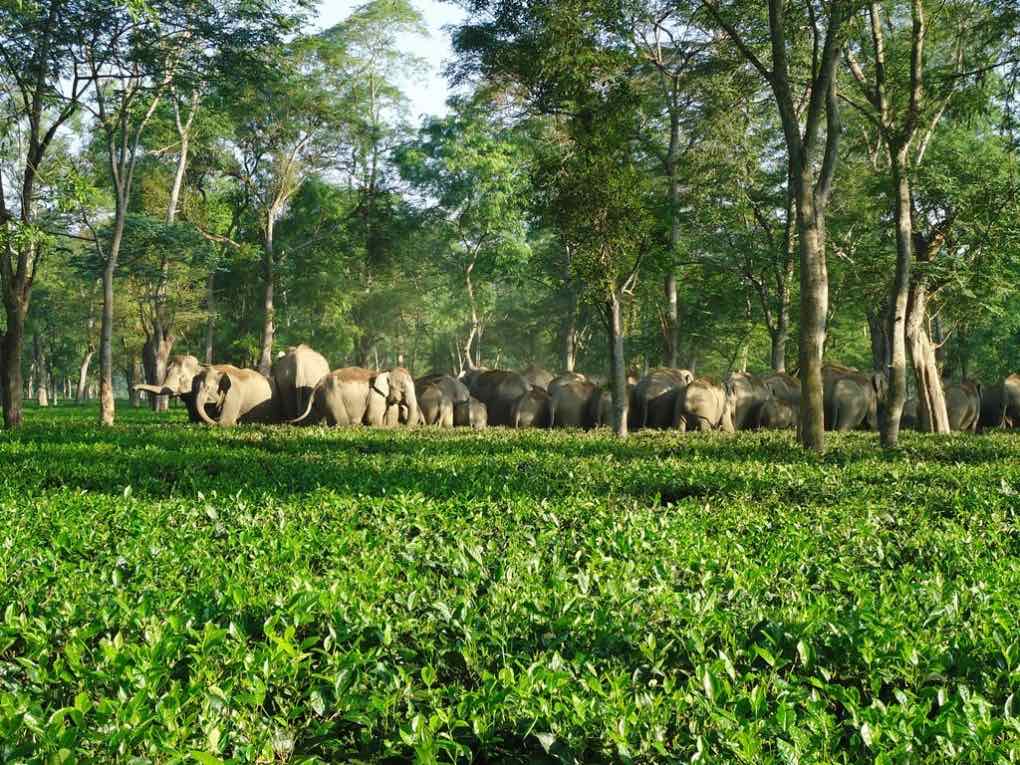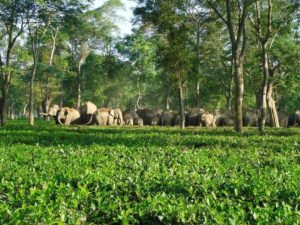
With more than eight hundred large tea estates and thousands of smaller tea gardens yielding more than seven hundred million pounds of black tea annually, Assam, India is the most productive tea-producing region in the world. The state is also home to more than 10 percent of the world’s remaining Asian elephants.
With an explosive human population and hardly any habitat available for a mega herbivore that requires six hundred pounds of food and one hundred gallons of water each day, the elephants of the region tend to congregate in what space is available: tea plantations.
Unfortunately, tea and elephants don’t mix.

“Tea plantations are death traps for elephants,” says Dr. Kushal Konwar Sarma, India’s beloved elephant doctor. “There’s not a blade of grass for them to eat. There are pesticides on the leaves, weedicides on the ground, and little or nothing for them to drink—and if there is any water, it is highly contaminated with harmful chemicals. There are trenches elephant calves often fall into and sagging electric lines.”
The Udalgari district of Assam is thought to have the highest rate of human-elephant conflict in the world. In this densely populated area, desperate and hungry elephants trample homes, raid rice paddy fields, and sometimes a stressed animal kills a person. For the elephants, the situation is no easier. They face an obstacle course of threats, including poisoning by pesticides, trenches, electrocution, and an overall loss of habitat.
Asian Elephants Revered
Elephants have an important role and a complex history in India, where they are revered as the incarnation of the elephant-headed god Lord Ganesha in the Hindu religion. Aside from the approximately five thousand to six thousand wild Asian elephants in Assam, and ten thousand in the region, there are an additional one thousand two hundred captive ones. Not only does Dr. Sarma look after and care for the majority of these captive elephants, but he often risks his life to save them—and to save villagers.
Restraining and treating aggressive elephants is a physically demanding task, but at age fifty-seven, Dr. Sarma shows no signs of slowing down. With his deep brown eyes, thick mustache, and baseball cap, there is youthfulness to the elephant doctor, who says that in his thirty- year career he has never taken off a weekend. Weekend highlights have included getting defecated on by an elephant to whom he was giving an enema, being covered in leeches as he hiked through forests to track a rogue, and, more than once, nearly getting killed—all to save elephants. While he could make a lot more money working full time with dogs and cats in an air-conditioned office, it is not money that motivates him.
“What elephants have done for me I could not repay in ten lifetimes. My heart is with the forest, with the land, with the people, and most of all, with the elephants, the last of the greatest creatures on earth. Without the elephants, I am nobody.”
Although deforestation and population growth go hand in hand, what Dr. Sarma would like most is for the remaining forests to be left untouched. “One should not just think of the forests as a source of livelihood, be it collecting fodder for animals, firewood for our kitchen fire or fireplace, and clearing the forest for cultivation and settlement,” he says. “We must think about the value of forests for our source of oxygen and water and for the very survival of all species on earth, and we must educate young people.”
**This excerpt about Dr. Sarma and his asian elephants is just one of the twenty stories of leading conservationists in my new book (co-authored with Janie Chodosh), Wild Lives. Take a look inside here:
One Reply to “Asian Elephants and the Man who is Saving Them”
Comments are closed.

Thank you very much Lori. You inspire me.